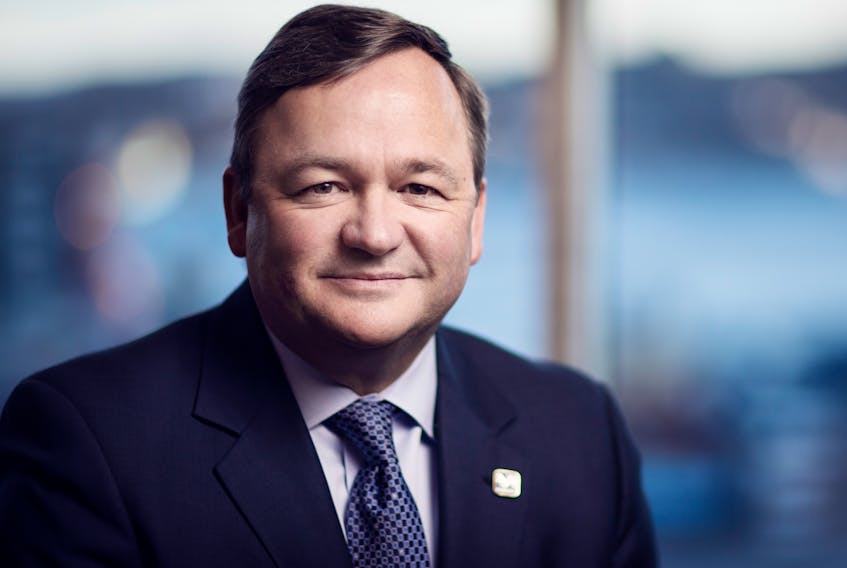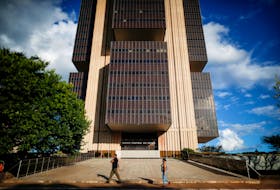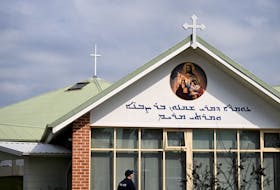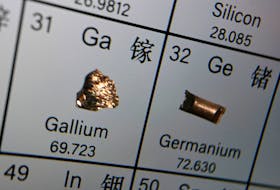For the first time in the history of Fortis Inc., the North American utility company surpassed $1 billion in adjusted net earnings in 2017.
It represents a 47 per cent increase over the previous year.
“I don’t think a Newfoundland and Labrador company has ever done that before,” Fortis CEO and president Barry Perry told reporters following the company’s annual general meeting in St. John’s on Wednesday. “We’re pretty proud of it.”
Perry attributes much of the success to the execution of a five-year, $15.5-billion capital investment program, finalizing a constructive rate case settlement at Tucson Electric Power in Arizona, and the full integration of Michigan-based ITC Holding Corp. in late 2016, an $11.8-billion acquisition that was the biggest in company history.
Related stories:
Executive shake-ups at Fortis, Newfoundland and Labrador Power
Fortis celebrates 30 years of TSX trading
“With the addition, Fortis now owns over 273,000 kilometres of transmission and distribution assets, enough to circle the globe almost seven times,” Perry told shareholders.
“In local terms, here in Newfoundland and Labrador, our transmission and distribution assets could run from St. John’s to Corner Brook nearly 200 times.”
In 2017, Fortis delivered a total shareholder return of 15.3 per cent, exceeding both the TSX composite and the utilities index, which came in at roughly 9 and 11 per cent, respectively.
Adjusted earnings per share also climbed by 10 per cent in 2017 to $2.53, but reported earnings per share were $2.32, which the company suggests is a reflection of tax reform in the United States.
With the acquisition of three regulated utility companies in the United States over the past five years, Fortis has more than doubled its size.
So, will the company make further acquisitions to bolster its position among the top 15 utility companies in North America?
“You never rule it out completely, but we’re spending about $3 billion a year on our existing businesses and that’s going to allow us to grow in that six per cent rate and that’s pretty darn good for a utility,” Perry said.
“We’re growing our dividend about the same amount, so if we can keep that going then I’m pretty comfortable with that.”
Growth will come from within the capital expenditure plan, which includes improving and automating the transmission and distribution grid, addressing natural gas system capacity and gas line network integrity, increasing cyber protection and allowing the grid to deliver cleaner energy.
It also involves the advancement of the Wataynikaneyap Power Project.
The $1.6-billion partner project between Fortis Ontario and Wataynikaneyap Power, a licensed transmission company owned by 22 First Nation communities, aims to connect 17 remote communities in northwestern Ontario to the provincial grid through the construction of 1,800-kilometres of transmission lines.
By eliminating the need for small-scale diesel generation, the project is estimated to reduce greenhouse gas emissions by 6.6 million tonnes.
Asked if Fortis is exploring the same type of project to service remote communities in Labrador, Perry says it hasn’t, but if they’re successful in Ontario it could lead to other similar opportunities across Canada.
“We have gained the trust of the First Nation communities, we’re going to do a damn good job there and I would hope there would be opportunities, frankly.”
Fortis is also keeping an eye on ITC’s Lake Eerie connector project to improve security and reliability of the Canadian and U.S. energy grids, and more liquefied natural gas investment in British Columbia.
When Fortis was founded in 1987 to act as a holding company for Newfoundland Light & Power Co. — now Newfoundland Power — the generation and distribution company represented 100 per cent of its assets.
Today it’s only three per cent.
But Perry says Fortis remains firmly rooted in this province and has no plans to pull up stakes and move to an area of North America in closer proximity to the other 97 per cent of its $49 billion in assets.
Not even given the troubled state of the province’s economy, which he believes will eventually improve.
“It’s going to be a tough period and some decisions will have to be made on electricity rates going forward, how to recover the cost of Muskrat Falls. I think we’ll come through it well and Fortis hopes to be, frankly, a part of that.”
As he’s said in the past, Perry suggests that, as in other jurisdictions throughout North America, one company would generate the power while another distributes it. At present, Newfoundland Power handles the vast majority of the distribution and transmission in the province, while Newfoundland and Labrador Hydro handles what’s left.
“Why not transfer that to Newfoundland Power, for a fair value obviously, and get the efficiencies on behalf of all customers,” Perry said.
“I think it’s the right thing to do, especially now that we’ve got to find every possible saving to offset the impact of Muskrat Falls. We’re hopeful over time that working with the governments, we can achieve something like that.”
Twitter: kennoliver79









